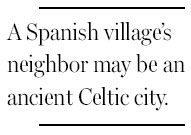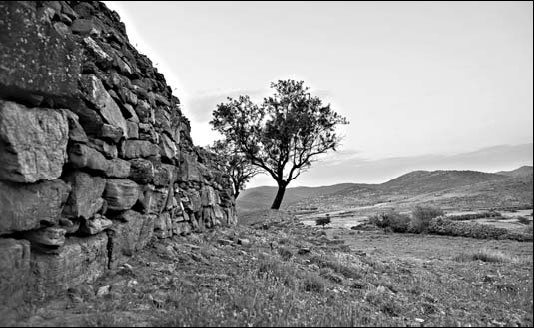Looted antiquities, and museum plan
Updated: 2013-08-04 07:19
By Suzanne Daley(The New York Times)
|
|||||||||
|
A wall near the Spanish village of Aranda de Moncayo, where the authorities say ancient Celtic helmets were stolen. Samuel Aranda for The New York Times |
ARANDA DE MONCAYO, Spain - The village of Aranda de Moncayo has been caught up in a bit of international intrigue after the arrest of a man who largely kept to himself but was sometimes seen out wandering at night with a metal detector.
Investigators who searched his homes found more than 4,000 looted antiquities, most of them, they say, dug up from the hill next door.
The police say his arrest is just the first salvo in an investigation that began when two bronze helmets appeared for sale at a German auction house.
Two thousand years ago, it seems, a bustling Celtic metropolis, called Aratikos, sat atop that hill, only to be destroyed by invading Romans.
The case has led Rosario Cabrera, the mayor of Aranda de Moncayo, to envision a new future for the 200 residents of the sleepy village. First, she wants a proper archaeological excavation. And then, perhaps, a small museum.
"It could bring a lot of tourists here," said Ms. Cabrera, who is fast becoming an expert on the Iberian Celts who settled in these parts and became targets of Roman aggression because the area was rich with copper, silver and iron.
Historians believe that the ancient city, about two hours north of Madrid, was burned to the ground.
Most villagers knew the area had a rich history, having found coins and bits of pottery over the years, but the exact site of the ancient city was always in question.
Experts say that at least 18 helmets have been illegally plundered from Aranda de Moncayo, far more than ever found before.
The authorities say they arrested Ricardo Granada, 60, in the case in March, and that he may have collected antiquities in the area for some 20 years.

Once, Ms. Cabrera said, Mr. Granada bought a plot of land at the foot of the hill. But he did not appear to know much about archaeological methods. He dug up the land using a backhoe and heaved loads of dirt onto the back of a truck, she said.
Experts at the Roman-Germanic Central Museum in Mainz spotted the helmets at an auction in 2008 and called the police to ask that they be held so Spain could claim them, said Michael Muller-Karpe, a researcher at the museum. The authorities did not act, and the helmets were given back to the auction house.
Experts at the Roman-Germanic Central Museum in Mainz who spotted the helmets at an auction in 2008 and called the police to ask that they be held so Spain could claim them, said Michael Muller-Karpe, a researcher at the museum. But the Spanish authorities did not act, and the helmets were eventually given back to the auction house for sale.
The handling of antiquities, experts say, is a bureaucratic tangle in Spain, with both the national government and regional governments having jurisdiction. The Culture Ministry referred questions to the regional government, which said it was reviewing the matter.
Now the mayor's idea of a museum appeals to some villagers.
"A lot of people are old here, and they just want peace and quiet," said Pilar Gonzalez, who runs a small restaurant and hotel on the village square with her husband. "But really a museum, anything, to bring people here would be so beneficial for us."
Rachel Chaundler contributed reporting.
The New York Times
(China Daily 08/04/2013 page12)
